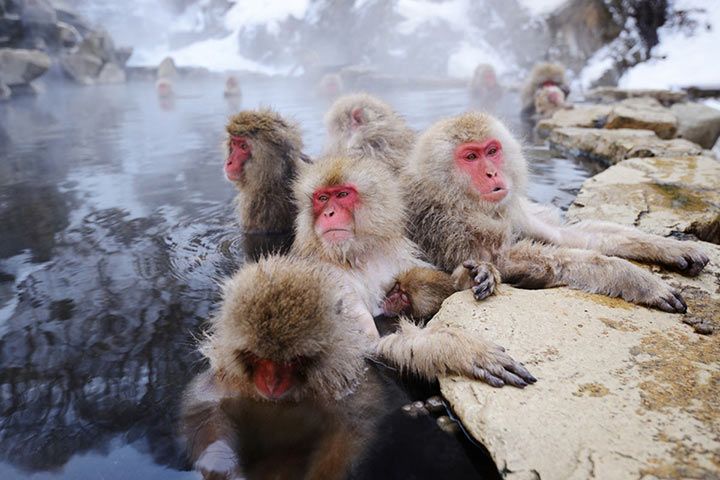9 Animals With Awesome Tricks to Survive the Winter
What do animals do to protect themselves from the cold in winter? We'll tell you their coolest tricks!
Brrrr! Our noses and ears turn red, our feet become blocks of ice and we can hardly move your fingers because of the cold. It’s winter! At this time of year, we have to wrap up warm to deal with the icy cold. In some regions of the world the temperatures even get as low as -58 degrees Fahrenheit (-50° degrees Celsius) outside. Still, there are animals that do not even shiver.
How do animals protect themselves from icy temperatures in winter? We'll reveal their best tricks! Some have built-in "thermal underwear", others jump into hot springs or even eat anti-freeze!
What Are the Coldest Temperatures Animals Can Survive?
| Arctic Fox | -94 degrees Fahrenheit (-70 degrees Celsius) |
| Greenland Tiger Moth (caterpillar) | -58 degrees Fahrenheit (-50 degrees Celsius) |
| Burgundy Snail | -40 degrees Fahrenheit (-40 degrees Celsius) |
| Japanese Macaque | -13 degrees Fahrenheit (-25 degrees Celsius) |

How Do Animals Protect Themselves from the Cold?
Here are nine animals and their tricks to protect themselves from freezing temperatures:
The Arctic Fox Wears “Thermal Underwear”.
In the Arctic, it can reach -58 degrees Fahrenheit (-50 degrees Celsius). Not to mention the extreme icy winds. Thankfully, the Arctic fox has its own kind of “thermal underwear”. Its fur isn’t just thick, but is also made up of 70% super warm undercoat. It even has thick fur on its paws. This lets the fox walk on the snow without falling in - like snow shoes.

Polar Bears Have “Solar Panels”
What color is a polar bear’s fur? White? Well, it looks white. But it’s not white. But in reality, the hairs are hollow and see-through. The heat of the sun is directed straight down to the skin (which is actually black) and saved there.

Ice Water for Icy Duck Feet
Ducks paddle in ponds and lakes day in and day out. In scorching sun, pouring rain or the coldest winter weather. But don’t ducks get frozen feet in cold water? And then the sniffles? Where are their winter boots? The answer: ducks don’t have any nerves or blood vessels in their feet. So cold water doesn’t really affect them. They don’t feel it and it doesn’t do any damage.
Burgundy Snails Bundle Up
The Burgundy snail has developed a tactic to survive harsh winters with temperatures as low as -40 degrees Fahrenheit (-40 degrees Celsius). They spit in their own shells (mmm, lovely!). Lime builds up on their membrane, their “front door”, which gets harder and harder. After a while, the shell is closed solid with a little cover and Jack Frost can’t get in.

- Table of Contents:
- 1. Records, Arctic Fox, Polar Bear, Duck, Snail
- 2. Reindeer, Fur Seal, Tit, Wood Frog, Monkeys
- 1
- 2













